The Ministry of Defence has paid around £6 billion to AirTanker Ltd since 2008 under a Private Finance Initiative (PFI) arrangement to lease and operate the Royal Air Force’s fleet of Voyager aerial refuelling and transport aircraft, a minister has confirmed.
The average annual cost of the Voyager PFI programme is approximately £353 million per year from 2008 to 2025.
Responding to a written parliamentary question from Labour peer Lord Sikka, Defence Minister Lord Coaker stated on 18 July: “The payments since 2008 for the AirTanker Limited concession contract total approximately £6 billion.” He added that 11 of the RAF’s 14 Voyagers are currently leased by the Ministry of Defence.
While the lease itself is longstanding and not new, the cumulative cost figure has drawn renewed attention. AirTanker Services Limited, the operator, and AirTanker Holdings Limited, the asset-owning company, are both private limited companies formed in 2007 and jointly headquartered at RAF Brize Norton in Oxfordshire.
They are owned by a consortium comprising Airbus, Rolls-Royce plc, Babcock International, Cobham, Thales Group, and Equitix Investment Management. AirTanker’s structure allows it to manage, maintain and operate the aircraft on behalf of the UK government, while retaining the ability to lease unused aircraft for commercial charter.
The 14 Airbus A330 Multi Role Tanker Transport (MRTT) aircraft are designated Voyager in RAF service. They are based on the civilian A330-243 airliner and converted to military configuration by Airbus Defence and Space. These aircraft form the RAF’s sole air-to-air refuelling capability, replacing the VC10 and Tristar fleets.
The Voyager has a maximum fuel capacity of 111 tonnes and uses a hose-and-drogue system for refuelling. In addition to tanking duties, it can transport up to 291 passengers or be reconfigured for aeromedical evacuation, including intensive care support.
All RAF Voyagers operate from RAF Brize Norton, with aircraft available for both military and civil tasking under AirTanker’s Air Operator Certificate (AOC). The airline operates under the call sign “TOWLINE” and has previously provided capacity for civilian charter and sub-leasing to commercial carriers.
According to the Ministry of Defence, the fixed-term concession under which AirTanker operates is intended to provide a cost-effective, scalable air mobility and refuelling solution. The Voyager fleet continues to play a central role in operations ranging from RAF fast jet deployments to strategic airlift and support to allied air operations overseas.



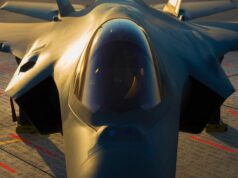

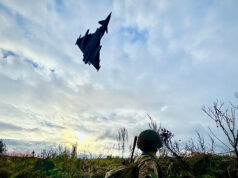
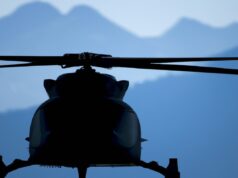
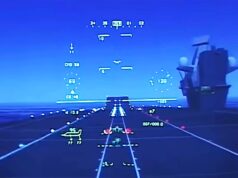
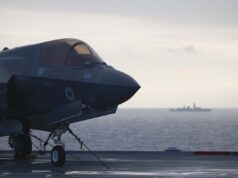
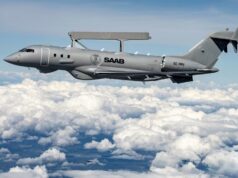
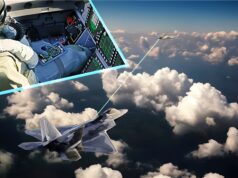
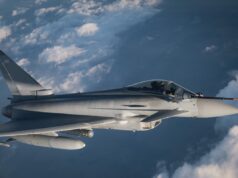
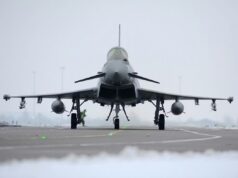

Whilst I don’t like PFIs that doesn’t strike me as a lot for 14 large frames *with crew* and servicing.
If that includes the fuel dispensed even better.
Anyone know?
It’s suppose to include fuel as well, I agree it doesn’t seem that much given the overall budget size.
I highly doubt it includes the fuel. That would be a stupid option for private company to take on. Companies don’t have the intel or influence to allow them to judge such matters to the degree required to sign up to such a deal.
It’s not with crew the RAF supply the crew.. it’s complicated but remember the RAF are only paying for 9 active aircraft the other 5 are off doing civilian work on contract. So the 9 in raf service are crewed by the RAF and the civilian tasked aircraft are crewed by civilian crews paid by the PFI.
Essentially it’s 9 operational aircraft without crews and an optional 5 with civilian reservist crews.
Profits from the 5 go to the PFI consortium.
The total PFI contract is essentially 14 billion pounds for 9 operational aircraft without crews + an optional 5 aircraft at charter cost with reservist crews.
Obviously the main cost is the airframes however the treasury would prefer not to pay large amounts of capital upfront but about £1,000,000 per day in the long term which is obviously far more expensive but that is PFI for you. Pre banking crisis and pre covid borrowing money from the bank of England and paying it back over the next 10-15 years would have meant we were just paying for fuel and maintenacce by now and we had repurposed the loan to provide 15-20 E-7 or something. Short term thinking never provides the best results.
Hi mark no the airframes are not the main cost.. in this case if you purchased them cash they were 112 million each or under this PFI the government will pay a total of £152 million each for the purchase. So if you just purchased them it would have cost 1.5 billion..under this PFI they cost 2.1 billion.. over its 29 year life the PFI will cost 13 billion so the capital cost is actually very low.
The MOD currently leases 11, the crew are service personnel.
The MOD pays for the cost of fuel and afbaf.
It’s interesting that 11 of the 14 are now in RAF service, that’s up from the previous 9.
Either operation tempo has increased – probably true so more are needed at rapid call.
Coupled with that how attractive are they for commercial use as they are reasonably thirsty beasts?
Are two still U/S?
No. Back on line.
👍
It is pretty quick to swap the engines out if certified spares are to hand.
One of the advantages of a civilian frame is that the flying % time is maximised.
So fiddly servicing is minimised as it is a negative for availability.
For things like engines major overhauls are unit swaps with the unit sent to the manufacturers for recertification.
“sent to the manufacturers” or their approved service agents. Last century, flag carriers had their own MRO shop, but not anymore so service agents plough a narrower furrow.
Some people think that more efficient..
The extra 2 airframes leased to compensate the loss of the C130js.
So that demonstrates the value of the flexibility.
The financial question then would be what is the cost of providing the flexibility, compared to the benefit from not having to have all 14 dedicated to RAF at all times such as when they are not needed.
Is this one a success – aiui like the RN vehicle transporters available on demand?
That is interesting as the unit cost of an A333 air to air refuelling tanker was 113 million pounds ( that’s how much other customers paid for outright purchases). Apparently the Uk paid around £152 million each for the purchase as part of the contract.
Ah, does the PFI include the capital purchase? I assumed it did?
If it does £1.89Bn is just buying the planes….im assuming a sensible rate is applied to that of say 4 or 5% then that is half the PFI cost before doing anything else.
So that leaves £3Bn to operate them over 17 years?
£15m per plane per year all in…..including profits. Sure offset by commercial use.
I think At least 2 of those 5 are used for the Falklands & Cyprus airbridges.
Yes, my understanding too.
Two on the airbridges and another 2 providing tanker support for the Typhoon detachments.
It would be interesting to throw some meaningful numbers around what the operating costs are per mile for a civilian aircraft equivalent.
Based on 11 aircraft at 32 million per year what are the costs, does the author know what the profit margins being made are, if it’s 8% OK…. If it’s 38% less OK.
Do some analysis instead of click bate numbers.
I have always been against this PFI stuff with military assets.
Just Gordon Brown again, trying to shove costs down the road rather than paying up.
Johnson Beharry VC rightly turned his back in him.
No different from any since.
On the costs, it it includes fuel and maintainence then not an issue if it is comparable with outright purchase?
It’s just that I believe the military should own its own assets.
Theoretically, there’s no need for the MOD to own assets. Delivery firms rent their vans, because their job is to deliver parcels not own vehicles. The MOD’s job is to win wars, not own the means to do so.
The problem for them is that they never know which/how many/where military assets will be needed at any given moment. In an ideal world, they’d own a few for training purposes and rent the rest when required. It’s cheaper. But that’s not practical for war machines so they have to own them ‘just in case’. Assets like fuel tankers and vehicle carrying ships they can rent when needed because the owners can put them to other uses when not needed by the MOD.
But I know what you mean!
How to you lease a tank on the open commercial market?
How do you price the risk of the asset being vaporised?
Commercial cost is all about risk.
Yep.
I was just trying to appear clever by saying the same thing as you in a lot more and bigger words.
Idiots who did not know what they were doing. They just saw airliners & thought “great we can lease them to charter airlines in quiet times”. This was stupid. Charter airlines work on tight margins. They cannot afford the weight of air refueling gear, cockpit armour, self defence systems, UARSI, cargo door & reinforced floor. So the UK taxpayer paid top dollar for half equipped tankers. Notice that no other country was daft enough to copy the UK. They bought proper A330 MRTT with refueling booms. Oh & does the £6 billion include the interest on the money we borrowed to lend to the consortium?
Yes, I’m against it. RAF should own its assets.
Hi M8, I
I hate PFI’s but this is actually one of the better ones as it’s not run by some clueless, faceless “investment company” it’s backed by our largest Defence contractors and that does have some advantages. A month ago 2 of them were vandalised and rendered U/S and needed their engines replaced ASAP, one of the investors is RR who have reputation and self interest on the line, problem solved PDQ.
Now cast your mind back to 2007 / 2008 it was the banking crisis, the Army is stuck in the sandbox and sucking the MOD CAPEX budget up. But MOD needed to replace the existing Tankers (they were all pretty well done), but no money for replacements. So other than Gap Air to Air for a decade (bye bye Falklands) we went with a PFI and yes it was expensive because you are spending someone else’s money but it has actually worked out pretty well.
In fact I’d actually sit down with them and see if a new but larger one can be negotiated to include new A330 MRTT and some C27J Spartans for SF and Tanker roll.
For the love of God No!
#Day35
Yet another brilliant U.K.agreement. What is wrong with us? The RAF are surely capable of managing their own aircraft.
The short answer is no. The really complicated structure of DE&S would either mean capability/availability would be sacrificed for cost savings which ultimately would end up costing more. The issue with what I’ve said is that you can’t prove a negative. I’ve seen enough of DE&S management of aircraft fleets to know that the Air Tanker solution is not only value for the money we’ve spent but also an absolute win in terms of serviceable aircraft availability. The best thing the RAF did was reduce RAF involvement in this project at the middle management level.
How much would it cost to own and operate 14 Voyagers??
I don’t know but the core fleet is eight which is presumably what we are paying for at a 100 per cent rate. With an OSD of 2040+, at the current rate the current agreement comes to £14 billion. Even with 14 aircraft it works out at £1 billion each.
So how would that compare with owning them outright for the same period?
A value judgment can’t be made without this knowledge, thus knowing the absolute value of the current contract means very little from that point of view.
Perhaps you can tell me?
A330 MRTT (a higher spec than Voyager) are quoted at $300 m each . Running costs over 30 years are thought to be three times that, as a rough guide. Buying them may have only saved £500m over Voyager, but they would have been higher spec & you would have constant use of 14, not 9 or 10.
There are a number of aircraft in RAF service (C-17, P-8 and [in due course] F-35A, etc) which use ‘boom’ refueling; does the PFI allow for the Voyager aircraft to retrofitted?
We are giving Mauritius, an openly corrupt government (best friends with China), how much for nothing in return, Lord Sikka?
With this UK money 81% of Mauritians will no longer have to pay any tax. And Mauritius will be able to pay off its national debt.
Unrelated though has possible future implications perhaps, been hearing there have been reported problems with breaking booms on US tanker aircraft. Anyone heard more?
But they are not Airbus derivatives?
All due to the ultra important NIH rule!
“been hearing there have been reported problems with breaking booms on US tanker aircraft”
Absolute rubbish
Very insightful 😂
There is a photo of a KC-46 with a broken boom. It was too stiff in strong winds. Both aircraft landed safely. It is another item Boeing is working to sort. Doubtless they will as the USAF contract is so large.
The boom incident with the KC-46 has happened before. Could be operator error in the KC-46 end or by the receiving aircraft. More likely is the crap vision system used on the KC-46, which is now delayed until 2027.
The whole point of the PFI was to keep the cost of outright purchase off the then Chancellor Gordon Browns books. I seem to remember the whole life of the Contract was 27 years at a cost of £ 10.5 billion.
Till WW3 breaks out & all the tankers hit the deck. No insurance company any where in the world will insure against war. When sh*t hits the fan, governments are forced to pay, like it or not.
Just another example of Gordon Browns toxic legacy. It amazes me how he has not been held to account for his appalling decisions as chancellor.
Removed banking supervision from BoE, result 2008 crisis.
Sold off gold reserves at a low point in gold price history
Sold off British Energy to EDF.of France
Sold off British Nuclear fuels
Expanded massively PFI contracts
Increased UK government debt every year from 2001
All to fund an expansion of welfare which has become a crippling and unaffordable burden.
Yep and then the Tories continued the sell off of every possible national asset.
This PFI contract is piddling small compared to the gigantic sums the NHS pays for PFI contracts and dont get me started on PFI in schools- it would obviously be a far far better use of public money to pay off the contracts at the going rate for the buildings and tell the PFI companies to do one.
Yep and unlike the schools and NHS ones it’s actually doing what it was contracted to do (except when MOD let 2 get vandalised).
The 2008 banking crisis was most certainly not caused by anything in the UK .
Bill Clinton being persuaded to remove US Banking supervision. Allowed banks to make products they didn’t understand, and customers certainly didn’t.
It originated in the United States with the bursting of the housing bubble and the subsequent subprime mortgage crisis and then the collapse of the investment bank Lehman Brothers only then did it spread to other financial markets and economies worldwide.
The 11 currently in use consist of nine tanker-transport on the military register and two without pods that are operated on the civil register on behalf of the MoD. The the civil bread and butter of the civil registered aircraft includes the regular two-day round trip to the Falklands.
And how much would it have cost to just buy the tankers outright? Maybe they should have got a PCP deal and get new tankers every 3 years. 😉
£113 million plus maintenance. The MOD also had to pay to equip them to go into hostile territory. Your right at £750 million per plane they could have bought a new one every 4 years. We already have to crew them. We don’t own them so come 2035 we have more fun. We should buy the KC-46 and preferably order them now given lead times. It’s got a drogue and boom system. So E7, F35A can be refuelled.
Buy Airbus, not Boeing. Europe First with taxpayers money.
Meaniless data in abstract. To be of any use, we would need to know what the running cost would have been for buying them outright and how long the service life would be to spread the up front purchase cost over. A figure in isolation doesn’t tell us if it’s good or bad value for money, and if bad, how bad.
Hardly. The Australian version is £9k per flying hour. (Australian defence budget 2019/20). Ours is £23k (Air tanker contract). Even when you chuck in the capital cost your at half the cost over 20 years. Based on an optimistic 1500 flight hrs per year during the Afghan period. Recent sortie data would suggest they are running at 500hrs. Which would make it even more expensive because we are still paying for them, whether we use them or not.
Do we know what’s included in that Australian figure? Does it include all running costs such as the maintenance and upgrade costs?
On the face of it based on on those figures we are getting a bad deal.
Yes the figure given is the total sustainment cost divided by the actual hours flown. This the standard approach for calculating cost per flying hour.
Are the rates a frequency of flying compatible?
Does the contract include fuel and/or other costs that the Australian might not?
The RCAF is presently converting 4 used A330s and buying 4-5 new ones for their MRTT program. Haven’t looked for cost information for this though.
The one thing non of you mentions is that in 2007 / 8 we had exactly 2 choices and it was nothing to do with Gordon Brown.
Cast your minds back to just before the 2008 Banking crash the Army was up to its neck in Iraq on operation Telac (£9.65 billion), and also in Afghanistan on Operation Herrick (cost £32.8 billion). They between them blew the MOD CAPEX & OPEX budgets to bits so zero money for new Tankers.
Problem was our existing ones were Ancient and getting to a point where they couldn’t be supported for much longer (Victors and TriStars), but no tankers meant no way to support those operations.
So Choices were :-
1. Gap the UK A2A Tankers for a decade, so bye bye Falklands and get out of the Sandboxes.
Or
2. Find someone else to spend their money on providing that capability via a PFI for us as we couldn’t afford to do it ourselves.
Guess what we did and 18 years later it’s still working as per the contract !
Actually we could have bought the 4 x A310 from the Luftwaffe. Cheap as chips as well. Or get a bigger defence budget, or get out of Afghanistan. In hindsight the latter would have been sensible. Since we left with our tail between our legs anyway, hey, ho.
Hi mate.
Good points with the monies expended in these pointless wars. I’ve not seen those costs quoted.
Gentle correction, Victor was long gone by 2003, I’m sure you meant the VC10.
10 and 101 with different marks of VC10, 216 with Tristar.
One of our posters here, Mark, flew in the VC10s.
I recall we had near 30 Tankers. Voyager far more capable but again cannot be in 2 places at once.
Hi M8
Yep my bad it was of course VC10 and Tri Stars.
As for numbers it gets interesting.
2010
V10 10 **
Tristar 9 **
So all 19 Tankers that could all supply and receive fuel from each other and 100% of the Frontline Aircraft
Harrier 74 *
Tornado 191 *
Typhoon 62 *
E7 7 *
Nimrod 13 *
Hercules 38 *
2025
Voyager 14 (Can’t receive fuel in Air and no boom).
RAF Aircraft in service or in order.
F35B 62 *
F35A 12
Typhoon 111 *
A400 22 *
E7 3
RC135 3
P8 9
C17 8
Given the fact that we had 378 Aircraft as customers and now it’s just 176, 19 down to 14 isn’t bad. What’s scandalous is non of the Tankers can be refuelled in the Air Themselves and another 35 front line Aircraft cannot be refuelled by the RAF at all.
1 * is can be refuelled by RAF & ** can be refuelled and refuel others.
Yes ludicrous. We have more types that cannot than those that can.
Money well spent adding Booms on the center line of the Voyagers rather than buying F35As.
Spot on ABC. We had, from memory, 11 ancient VC10s and 8 ageing Lockheed Tristars. All needed replaced but there was nothing spare in the RAF’s budget to buy anything.
It was nothing to do with Gordon Brown’s government really. It is a recurring problem when the defence budget is miles too small to replace even the limited number of aircraft, armoured vehicles and warships we have left on a one-for-one basis. Hence necessity of a PFI for Voyager.
I belive we hit the break clause in the Ait Tanker agreement in 2035.
With a rising defence budget, we should be looking to buy a fleet of flexable MTT’s, I would suggest whatever option Airbus is offering in 2030 and get them ordered for delivery by 2035.
We need an A330 or 350 based option, with boom, wing pods and a fully reconfigurable interior, with a freight door.
It has to be rapidly convertible from ‘max’ fuel weight, to medical evacuation, troop transport, or full freight, or a mix of the above.
If the RAF is expanding, then order 16-18 aircraft.
Along with this, AAR kits for our A400’s.
Maxim flexibility is required.
This is the cost of 2 x Carriers 4 x Astute, 6 x T45’s, 12 T31’s or 8 FSS!! What would be the cost if the RAF owned the A/C??
That is the real test.
How does the price stack up against the cost of MoD ownership and operation? Perhaps that should be the next RFI?
Actually I’d a question to that, given that spares shortages are endemic in U.K. forces how would availability compare ?